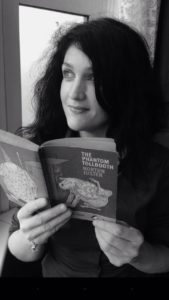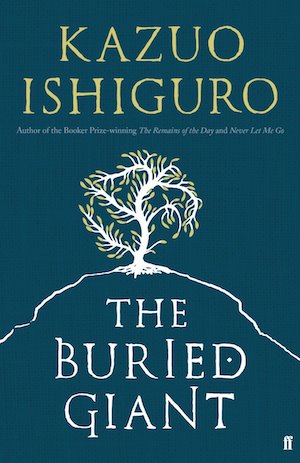It’s been a decade since Kazuo Ishiguro’s sinister, sci-fi-esque Never Let Me Go, a novel I really liked. In The Buried Giant Ishiguro yet again embarks on a genre bending project. This time it’s fantasy. We’re in 6th century post-Roman Britain and a mist has descended on the landscape and peoples’ minds, obscuring memories of recent wars. Axl and Beatrice, an elderly couple go on a journey to find their son and stumbles over dragons, ogres, knights and monks as well as recollections of a violent past. Despite the beautiful, atmospheric writing and profound message, I found The Buried Giant hard work. Will this only be the case for fantasy-sceptics like me?
Marginalised by their own community for reasons unknown or forgotten, Axl and Beatrice live at the outer edge of their little village in something resembling a lair. Their son has moved away but neither Axl nor Beatrice can remember why. Determined to find out they go on a dangerous journey. At first, it seems that they are simply an old dement couple, but as the story progresses it becomes clear that everyone’s memory is shrouded in the same ‘mist’.
On their way, they meet Wistan, a warrior out to kill the she-dragon Querig who, it seems, is responsible for the ‘mist’, Sir Gawain, an elderly knight and the nephew of King Arthur, also on a mission to kill Querig, Edwin, a young boy ostracised by his village after being bitten by a dragon and a number of other fairy-tale like creatures.
Yes, I know what you’re thinking. Ishiguro’s high-brow literary fiction and fairy tales? Really? Yes, really! Ishiguro has, of course, a higher purpose in mixing the fantasy genre with his message about collective memory and how we deal with the past. The Buried Giant could be read as a sort of parable for any conflict and how societies choose to forget or not, as the case may be. Is forgetting an unequivocally bad thing? Will it make forgiveness easier? Or is it the memories, good and bad, that make us who we are and prevent us from repeating our mistakes?
What Ishiguro does exceptionally well is creating atmosphere. His signature writing style, quiet and restrained, gives the story an eerie, unsettled feel. Suspicions run high, of other people and their motives, no one can be trusted. Mixed in with suspicion is fear of wolves and bears, ogres, bandits and strangers.
I also like the way Ishiguro at the start of the book takes the reader by the hand and ‘walks’ us back in time to the desolate landscapes and primitive villages of 6th century rural Britain.
You would have searched a long time for the sort of winding lane or tranquil meadow for which England later became celebrated. There were instead miles of desolate, uncultivated land; here and there rough-hewn paths over craggy hills or bleak moorland. Most of the roads left by the Romans would by then have become broken or overgrown, often fading into wilderness. Icy fogs hung over rivers and marshes, serving all too well the ogres that were then still native to this land.
The story moves along slowly, sometimes too slowly and soon I started to tire of hearing about the ‘mist’ and how everyone had forgotten everything. Sure enough, there are suspenseful parts with our protagonists rambling through tunnels cluttered with skeletons, but they didn’t grab my attention. Far more interesting was the tender love between Axl and Beatrice.
In a way, the enjoyment of this book will depend on whether or not you buy into the fantasy elements. Personally, I find fantasy slightly irritating. For me the dragons and the ogres become a distraction. Ishiguro has said that using an unrecognisable setting is helpful in detaching the issues from our own time and de-politicise them. This might be true, but in the end it will only work if the reader enjoys that unrecognisable setting. Perhaps you will.
The Buried Giant by Kazuo Ishiguro is published by Faber & Faber, 345 pages.





